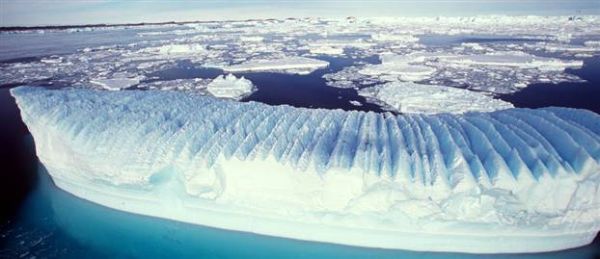Life Thrives in the Coldest and Darkest Places in the Antarctic, Researchers Find
| Paula Marie Navarra | | Aug 21, 2014 09:59 PM EDT |
Scientists have found there's life in the coldest and darkest parts of the Antarctic ice sheet located one half mile below the surface.
This finding came to light after a massive U.S. expedition at Lake Whillans, a subglacial lake the deeper portions of which haven't been touched by sunlight for millions of years.
Like Us on Facebook
Scientists have published a paper confirming the waters and sediments of a lake 800 meters beneath the surface of the West Antarctic ice sheet support "viable microbial ecosystems." There are an estimated 400 subglacial lakes and numerous rivers and streams beneath the Antarctic ice sheet.
Scientists believe these ecosystems could be widespread and might influence the biological and chemical composition of the Southern Ocean, the sea that surrounding Antarctica.
The project that led to this discovery was the "Whillans Ice Stream Subglacial Access Research Drilling (WISSARD)."
WISSARD has provided a glimpse of the nature of microbial life that could exist under more than 5 million square miles of ice sheet.
Water from subglacial Lake Whillans show the lake contains a diverse microbial community. Surprisingly, many microbes can mine rocks for energy; use carbon dioxide as their source of carbon and convert ammonium and methane into the energy required for growth.
Researchers said many of the subglacial archaea used energy from the chemical bonds of ammonium to fix carbon dioxide. There are other microorganism groups that use energy and carbon in methane to survive.
WISSARD began in 2009 with a US$10 million grant coming from the National Science Foundation. It's the first large scale multidisciplinary effort that examined the biology of the Antarctic subglacial environment.
Researchers said Antarctic ice covers an area one and half the times the size of the United States and contains 70 percent of Earth's freshwater.
Researchers were able to prove unequivocally to the world that Antarctic is not a dead continent, said John Priscu, one of the researchers. There's not only life but active ecosystems underneath the Antarctic Ice Sheet.
Priscu believes the ammonium and methane came from the breakdown of organic material that was deposited in the area when Antarctica was warmer hundreds of years ago.
If Antarctica continues to warm, the vast amount of methane, a potent greenhouse gas, will be liberated into the atmosphere and enhance climate change.
Researchers are looking at water column that probably has 4,000 incredibly diverse species. They're planning to drill again when the Austral summer came to the Antarctic.
©2015 Chinatopix All rights reserved. Do not reproduce without permission
EDITOR'S PICKS
-

Did the Trump administration just announce plans for a trade war with ‘hostile’ China and Russia?
-

US Senate passes Taiwan travel bill slammed by China
-

As Yan Sihong’s family grieves, here are other Chinese students who went missing abroad. Some have never been found
-

Beijing blasts Western critics who ‘smear China’ with the term sharp power
-

China Envoy Seeks to Defuse Tensions With U.S. as a Trade War Brews
-

Singapore's Deputy PM Provides Bitcoin Vote of Confidence Amid China's Blanket Bans
-

China warns investors over risks in overseas virtual currency trading
-

Chinese government most trustworthy: survey
-

Kashima Antlers On Course For Back-To-Back Titles
MOST POPULAR
LATEST NEWS
Zhou Yongkang: China's Former Security Chief Sentenced to Life in Prison

China's former Chief of the Ministry of Public Security, Zhou Yongkang, has been given a life sentence after he was found guilty of abusing his office, bribery and deliberately ... Full Article
TRENDING STORY

China Pork Prices Expected to Stabilize As The Supplies Recover

Elephone P9000 Smartphone is now on Sale on Amazon India

There's a Big Chance Cliffhangers Won't Still Be Resolved When Grey's Anatomy Season 13 Returns

Supreme Court Ruled on Samsung vs Apple Dispute for Patent Infringement

Microsoft Surface Pro 5 Rumors and Release Date: What is the Latest?










